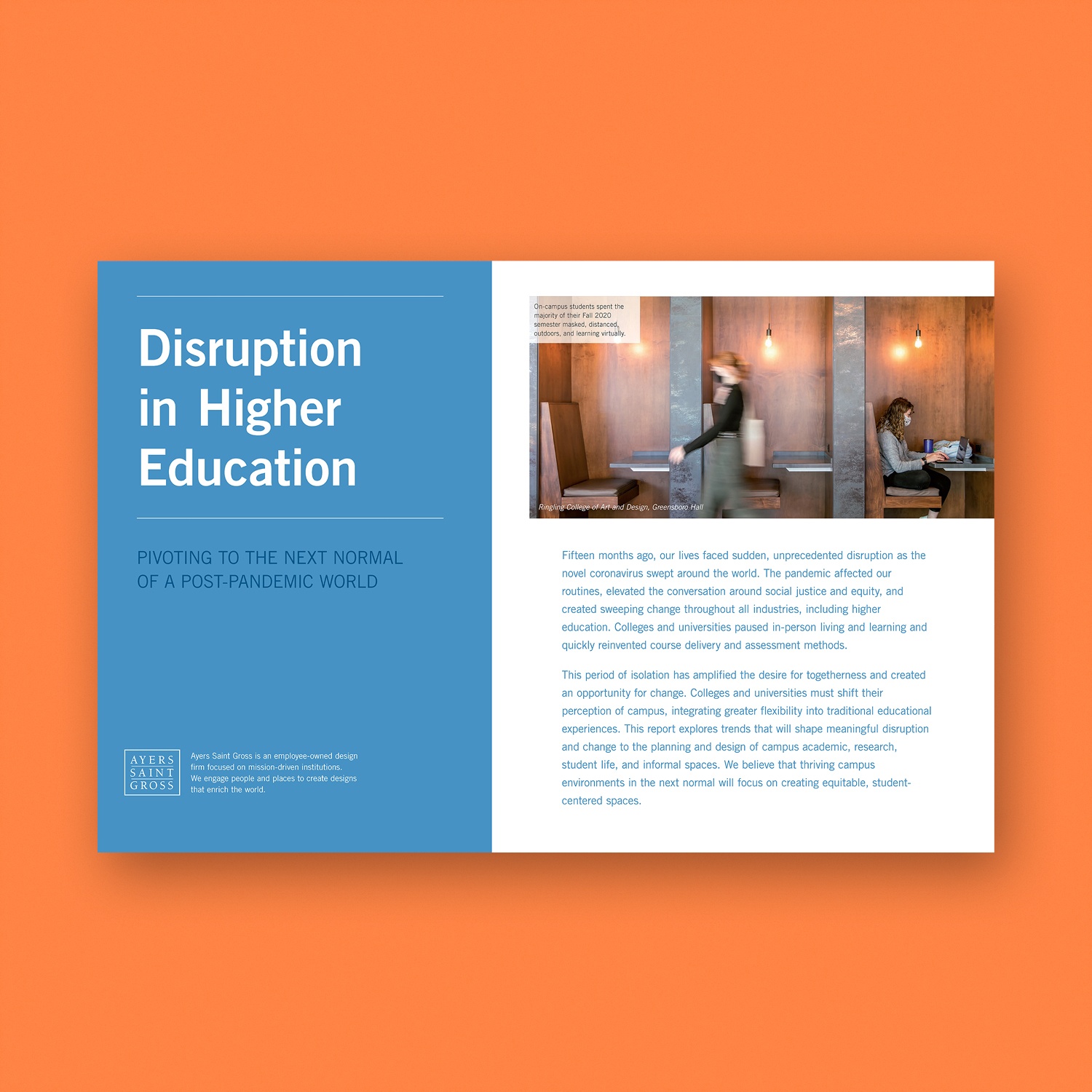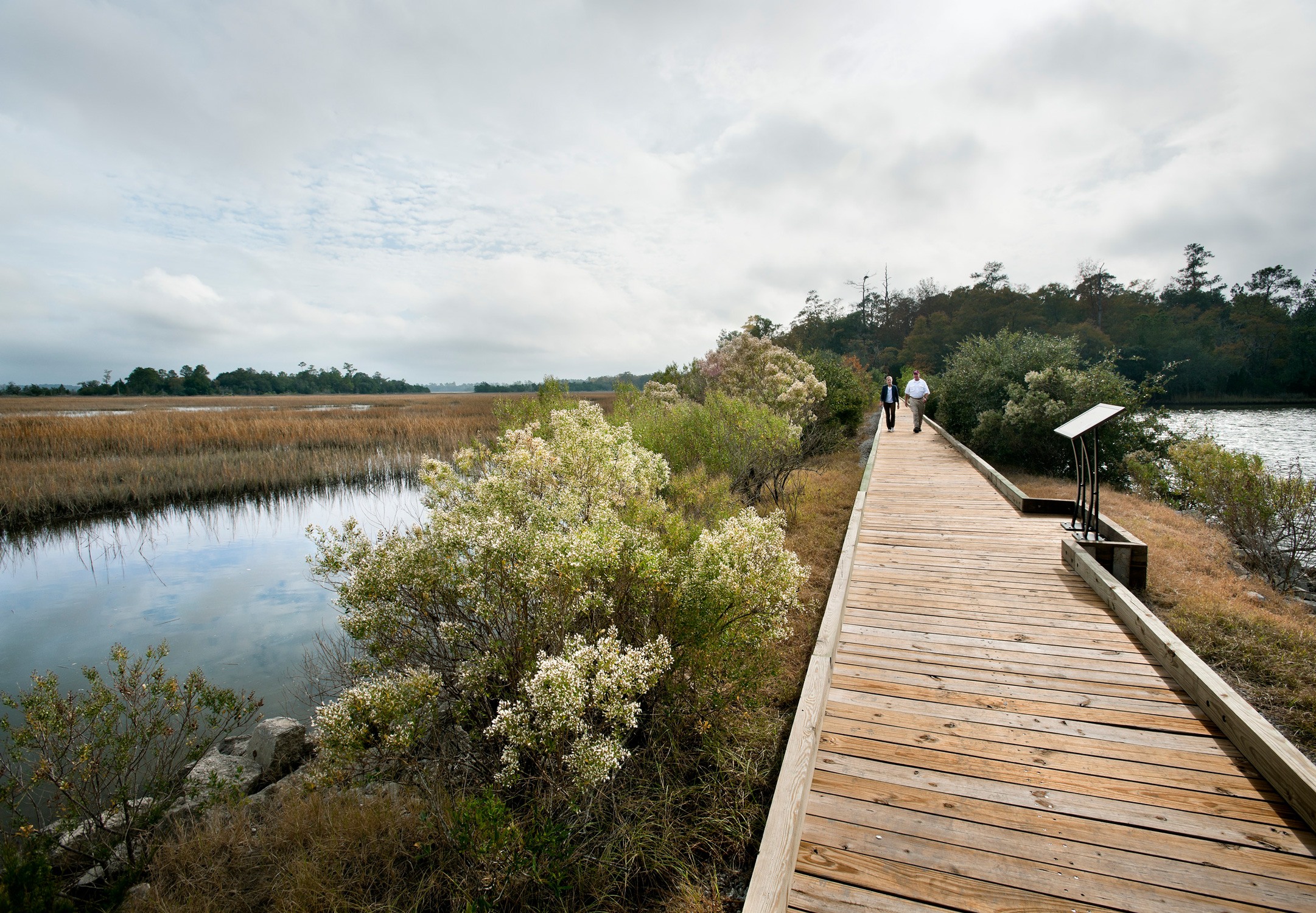As a result of COVID-19, colleges and universities have experienced an unprecedented mass move off campus. It is unlikely this was a scenario explored in your master plan. During this moment of crisis, a master plan developed before the COVID-19 outbreak can provide valuable information about how to maintain vibrancy while keeping people safe. Here are four places to look:
- Analytics as a foundation
- Applying planning principles in new ways
- Upholding a sense of place
- Finding a path forward
Analytics as a Foundation
A clear-eyed, data-driven analysis of the campus forms a strong foundation for a master plan and a back-to-campus strategy. Master plan analytics collect, synthesize, and visualize key data sets to show what assets exist and how they are used. Having a robust understanding of a pre-COVID starting point allows a quick pivot to modeling new scenarios.
Will any longstanding space standards be applicable in the future? To be flexible and forward-looking, space metrics must carefully consider the individual human experience in physical space. Planning to distance students in the classroom illustrates why modular thinking is important. The reality on many campuses is that large swaths of the classroom inventory are quite dense. Space analysis often reveals large lecture halls with about the same square footage per student as a passenger on an airplane – widely agreed upon as a high-risk environment during a pandemic. To hold classes in person, more space must be provided for each student. To determine precisely how much more space, planners and designers must consider each individual rather than work in averages. These sorts of changes to the planning module create ripple effects across campus that can be understood using a data-rich master plan.
Master plans set target metrics, and they also explain why the metrics matter. For many years, higher education classroom design has trended toward more square footage per student and flexible furniture to support student success: research demonstrates that more space per student supports better learning outcomes. While physical distancing and active learning suggest increasing space per student, the goals of each shift are quite different. We can’t lose sight of student success objectives during this time. Will students be spaced so far apart that they can’t reap the benefits of learning from their instructors and peers?
Applying Planning Principles in New Ways
Master plan participants look at the campus using a telescope and a microscope. Detailed “microscope” thinking is fueled by current priorities and assumptions and is subject to change. “Telescope” thinking generates planning principles, enduring values that inform future decision making about the campus, including a COVID-19 back-to-campus strategy.
For example, institutions often choose a principle like “welcome” because it speaks to inclusivity, openness, and partnerships. There is an inherent tension between increased engagement and safety, and never has that tension been more apparent. Visitor experience planning creates carefully choreographed moments that welcome users and clearly describe how they should use a space. With this guidance, many people will comply. As campuses reopen, the community – and visitors to the extent that they’re allowed on campus – may be greeted each day by a temperature check or other screening. The vision of being a welcoming environment suggests that the experience of that new daily ritual matters. In addition to serving an important public health purpose, it is a community building and communication opportunity.
The idea of welcome also reminds us that a campus community is diverse, and the COVID-19 pandemic disproportionately impacts underprivileged communities. Campus facilities are safe places to live and work for many individuals who have few other options. We see clearly in this time the mission-critical nature of that role. How can institutions pursue those aims in a welcoming manner?
Though they may need to be reinterpreted, planning principles apply in times of crisis.
Upholding a Sense of Place
A master plan identifies unique features of an institution and its campus. Safety is the top priority, but there are many ways to execute a back-to-campus strategy. The master plan can spark creative thinking about safe and appropriate ways to maintain the magic of being on campus as part of a holistic approach.
Leaders are working to identify essential in-person activities and strategies to conduct them safely. Fundamentally, there must be fewer people on campus. Is it possible for the campus to feel alive without a rush of students across the quad at class change? Even from a distance and with fewer people, a long view of your fellow community members going about their daily lives is poetic and impactful – especially after months in quarantine.
A master plan celebrates sacred spaces. They may include historic buildings that are harder to maintain and adapt, but making use of these facilities – if practical – ensures vitality in these incredible places and reinforces for students that their education is place-based: the experience they have on campus is distinctive, if different from the experience offered before. It also connects the campus community to previous generations, who endured wars and other global crises. Campus life was radically different during those eras as well; this reminds us that change is constant.
Master plans look both backward and forward. Forward thinking pushes us to establish new sacred spaces. Landscape enhancements can have a powerful impact with modest investment. Outdoor spaces provide a therapeutic and calming escape, and gathering outdoors with appropriate distancing practices may offer reduced risk. Establishing an outdoor classroom or other landscape enhancement envisioned in the master plan might serve the campus well now and become a sacred space in years to come.
Many campuses will have a rare opportunity during the transitional period: lower parking demand. This might be an opportunity to experiment with pilot projects suggested in the master plan, like closing a parking lot or road to vehicles and repurposing it for recreational uses like cycling, fitness classes, or outdoor seating for dining.
Finding a Path Forward
While this crisis will impact each individual and institution differently, the need to adapt is universal. This experience will catalyze rapid shifts in growth aspirations, priorities, and access to resources. Demographic trends suggest increased competition for students will persist beyond the COVID-19 threat. Many institutions will need to plan for smaller overall enrollment and decreased revenue. A fundamental long-term physical planning challenge will be scaling down, whether in targeted areas or across the board. This will present different challenges than scaling up. Hard decisions and new ways of thinking and operating will be needed.
Many of the master plan elements that inform back-to-campus strategies will fuel long-term flexibility as well: forward-looking space metrics, principles that speak to small and large investments, a commitment to place. Master plan ideas that optimize current assets will be critical in the long-term: a smaller footprint works best when we embrace what we have and use it well. While distancing requirements will cause low utilization of space in the near-term, comprehensive renovations can enable transformative increases in utilization over time.
As institutions prioritize their areas of strength and respond to market realities, they may realize that some important, specialized spaces cannot be effectively provided through retrofit and renovation. Strategic new construction may still play a role in a plan that shrinks the overall footprint. A limited new construction strategy means new facilities will need to serve the institution holistically in a way that moves beyond silos. Master plan proposals for new interdisciplinary, interdepartmental facilities with shared spaces and strong connections to existing assets are the best candidates to prioritize moving forward. Moreover, plans for new construction will need to be coupled with serious consideration of demolition rather than backfill. There are sustainability implications of abandoning the embodied carbon of an existing facility, but there are resource consumption implications – both environmental and economic – of continuing to maintain and operate an over-scaled portfolio.
Lastly, the master planning process can be more important than the product. Investments in process build consensus and a coalition that supports implementation. The COVID-19 era emphasizes that process also builds flexibility. More engagement in the master planning process means that participants understand the relationships between different elements of the plan as well as the final recommendations. They are more likely to see how adjustments to specific recommendations and priorities are consistent with the vision and values for your campus. Master plan participants may be key contributors to the back-to-campus strategy. Ultimately, master plan investments in your planning community enhance your flexibility to adapt.









